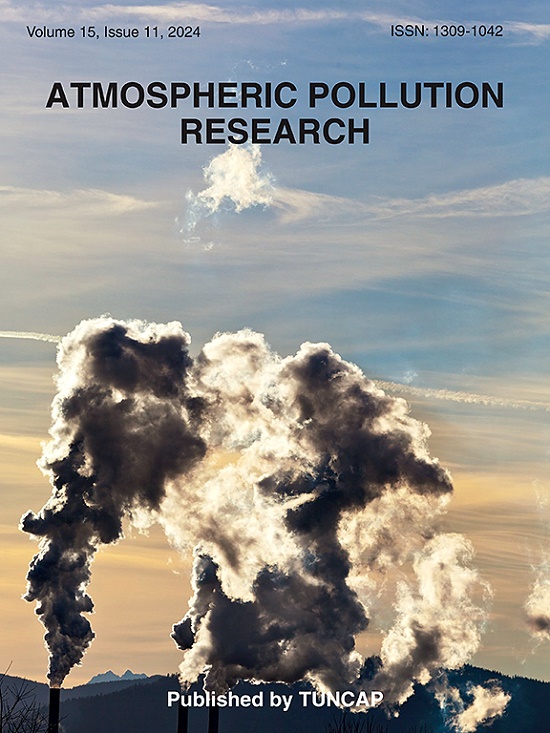A temporal domain generalization method for PM2.5 concentration prediction based on adversarial training and deep variational information bottleneck
IF 3.9
3区 环境科学与生态学
Q2 ENVIRONMENTAL SCIENCES
引用次数: 0
Abstract
Accurate prediction of PM2.5 concentration is crucial for environmental pollution control and public safety. However, PM2.5 concentration is influenced by various factors and follows a dynamic temporal distribution, potentially reducing the generalization capability of prediction models for future prediction. To address this issue, we propose a novel temporal domain generalization method modeled from a distribution perspective. This method aims to extract invariant information from dynamic and time-varying temporal distributions to improve future prediction by combining adversarial training and deep variational information bottleneck (Deep VIB). Specifically, the training data is first segmented into multiple temporal domains characterized by the largest temporal distribution differences. Deep VIB is then employed to extract fine-grained features, combined with a domain classifier to eliminate domain-specific information through adversarial training. Finally, only the trained feature extractor and predictor are applied to the prediction process. This approach enables the prediction model to simultaneously extract domain-invariant features while minimizing prediction errors, thereby enhancing its generalization capability. Experimental results from real-world data demonstrate that the proposed method outperforms state-of-the-art prediction models, achieving average improvements of 3% in mean absolute error, 7% in root mean square error, and 3% in R-square compared to the best baseline models.
基于对抗训练和深度变分信息瓶颈的PM2.5浓度预测时域泛化方法
准确预测PM2.5浓度对环境污染控制和公共安全至关重要。然而,PM2.5浓度受多种因素的影响,呈动态时间分布,可能会降低预测模型对未来预测的泛化能力。为了解决这个问题,我们提出了一种新的从分布角度建模的时域泛化方法。该方法旨在结合对抗性训练和深度变分信息瓶颈(deep VIB),从动态时变时间分布中提取不变信息,以提高对未来的预测能力。具体来说,训练数据首先被分割成多个时间域,这些时间域的特征是时间分布差异最大。然后使用深度VIB提取细粒度特征,结合领域分类器通过对抗性训练消除特定于领域的信息。最后,只将训练好的特征提取器和预测器应用于预测过程。该方法使预测模型能够在最小化预测误差的同时提取域不变特征,从而提高模型的泛化能力。来自真实世界数据的实验结果表明,该方法优于最先进的预测模型,与最佳基线模型相比,平均绝对误差提高3%,均方根误差提高7%,r方误差提高3%。
本文章由计算机程序翻译,如有差异,请以英文原文为准。
求助全文
约1分钟内获得全文
求助全文
来源期刊

Atmospheric Pollution Research
ENVIRONMENTAL SCIENCES-
CiteScore
8.30
自引率
6.70%
发文量
256
审稿时长
36 days
期刊介绍:
Atmospheric Pollution Research (APR) is an international journal designed for the publication of articles on air pollution. Papers should present novel experimental results, theory and modeling of air pollution on local, regional, or global scales. Areas covered are research on inorganic, organic, and persistent organic air pollutants, air quality monitoring, air quality management, atmospheric dispersion and transport, air-surface (soil, water, and vegetation) exchange of pollutants, dry and wet deposition, indoor air quality, exposure assessment, health effects, satellite measurements, natural emissions, atmospheric chemistry, greenhouse gases, and effects on climate change.
 求助内容:
求助内容: 应助结果提醒方式:
应助结果提醒方式:


